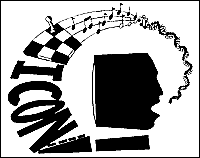
Programming Corner from Icon Newsletter 30

merely copies the pointer produced byL := list(1000)
list(1000) into L;
the 1,000 values are irrelevant as far as the assignment is concerned --
they are not even referenced.In order to perform computations on such a structure, it is necessary to represent them in some way in a program. One way to do this is to represent each node in the graph by a set. Then the values in the set are pointers: arcs to the nodes to which the node points. For example, the program structures for the graph shown above are:
The important conceptual point is that a set is a pointer to a collection of pointers to other sets. A slightly different visualization of the structures in the programming domain illustrates this:A := set() B := set() C := set() insert(A,B) insert(A,C) insert(B,B)
Thus, an arc is represented by a (pointer to) a set and a node is represented by the values in the set.
procedure closure(n)
S := set()
insert(S,n) # start with the node itself
return more(S,n)
end
procedure more(S,n)
every n1 := !n do # process reachable nodes
if not member(S,n1) then { # skip ones already in
insert(S,n1) # add new node
more(S,n1) # recurse
}
return S
end
Note that a set is used to keep track of nodes already accumulated.where the value field contains the value associated with the arc and the node field contains the set to which the arc points. Suppose, for example, that the arcs in the example above are weighted:record arc(value,node)
Then the graph can be represented in the program as follows:
Exercise: Modify the procedure closure given above to handle this representation of directed graphs.insert(A,arc(2.0,B)) insert(A,arc(1.5,C)) insert(B,arc(3.7,B))
Exercise: Write a procedure to read this representation of unweighted graphs and build the corresponding program structures.A->B A->C B->B
Consequently,Node := table() Node["A"] := A Node["B"] := B Node["C"] := C
Node["A"] produces the node (set) labelled
A. Such a table might be used, for example, in constructing
a graph from its string representation as posed in the exercise above.It is not necessary to have two tables, however. Since the keys in a table need not all be of the same type, the same table can be keyed with both the labels and the nodes (sets):Label := table() Label[A] := "A" Label[B] := "B" Label[C] := "C"
Such a ''two-way'' table keeps all the information needed to associate labels with nodes and vice versa in one structure. Subscript it with a label to get the corresponding node and subscript with a node to get the corresponding label.Graph := table() Graph["A"] := A Graph["B"] := B Graph["C"] := C Graph[A] := "A" Graph[B] := "B" Graph[C] := "C"